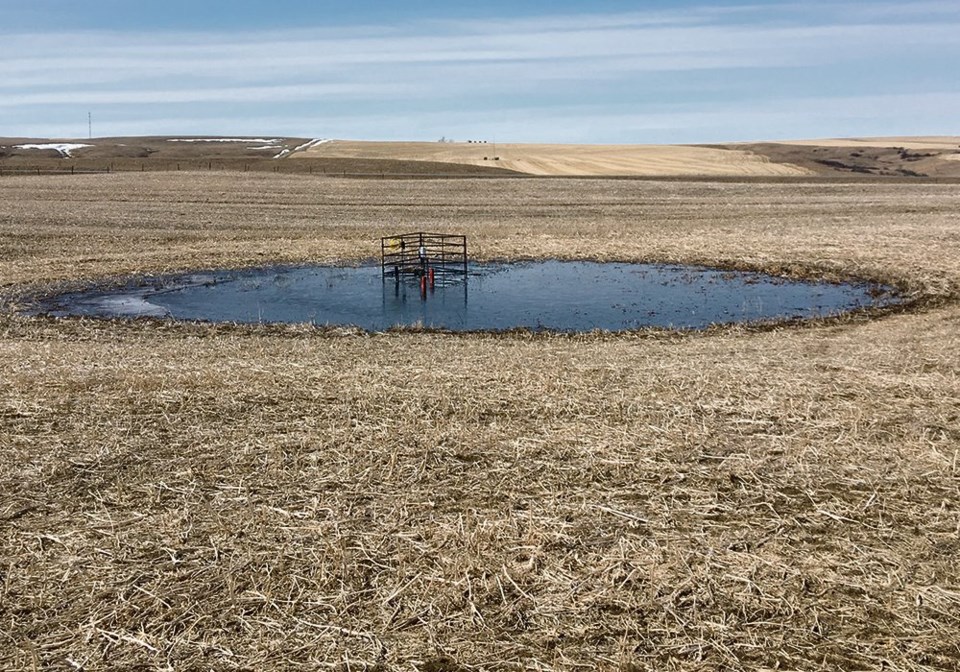Future climate conditions on the Prairies will be warmer and wetter, which should result in more groundwater recharge. Wrong. University of Calgary research says the opposite might be the case.
A computer model developed by Masaki Hayashi in the department of geoscience indicates that climate change may actually reduce groundwater recharge.
Hayashi says that prairie depressions collect runoff rain and snowmelt water from the surrounding area and move it into the groundwater. These depressions are 50 to 100 metres in diameter and up to two metres deep. The low areas become ponds in the spring. Some of the larger depressions have water that stays throughout the summer. Those are called wetlands or prairie potholes. They were left when the last glacial ice sheet retreated from the Great Plains 12,000 years ago.
Climate change may impact this delicate groundwater recharge process. Most of the water in these depressions comes in the form of runoff from snowmelt as it flows over frozen soil. Canadian researchers are studying how this process may be disturbed in the future as our climate changes.
“We cannot manage a renewable resource unless we know how much is renewed every year,” says Hayashi. “It would be like trying to manage expenses from a bank account without knowing the amount of revenue.”
To determine how a warmer wetter climate would impact groundwater recharge, the scientists devised a model to simulate the environment. By placing instrumentation directly in the depressions, they gathered information on soil properties, weather, size of the depression and surrounding environment. Their work is a “soil water balance” model. It simulates how, in the future, water might move from the surface into deeper soil layers.
The study told them that snow accumulation will decrease along with the volume of runoff into depressions, therefore less groundwater recharge. That’s not good news.
“A wetter climate generally results in greater groundwater recharge. But that isn’t the case in the Northern Great Plains where recharge is focused in depressions. Even though total precipitation may increase, it will be in the form of more rain and less snow. This means that snow accumulation in winter will decrease. Also, we will have a shorter duration of frozen soil and shallower penetration of soil frost.”
Hayashi says the because the study predicts less frozen ground for briefer time periods, it would allow more snowmelt infiltration. However, the increase in infiltration would be small, only 20 to 30 millimetres, and not enough to offset the other changes.
“And it will not reach the bottom of the root zone. As such, most of the increased infiltration will be used up by plants during the growing season. I do not anticipate the benefit of increased upland infiltration to compensate for the adverse effects of reduced ponding in depressions.”
This compounds the problem because slow-moving snowmelt flowing over frozen soil, which doesn’t allow it to absorb quickly, is the key to runoff flowing into depressions. The decrease in recharge can have many effects on the prairie environment. Many small springs fed by groundwater could be impacted.
“It may result in a decrease in the base flow of small streams fed by groundwater. Some perennial streams may become seasonal. This may have a strong influence on the stream ecosystem. Overall, these small depressions may seem less important compared to larger depressions holding prairie wetlands. However, there are many more small depressions, and they are collectively important for groundwater recharge.”
He adds it’s possible the flowing artesian springs at the eastern end of the prairies will go dry. However, it’s more likely the flow of those springs will substantially decrease and may not dry completely.






